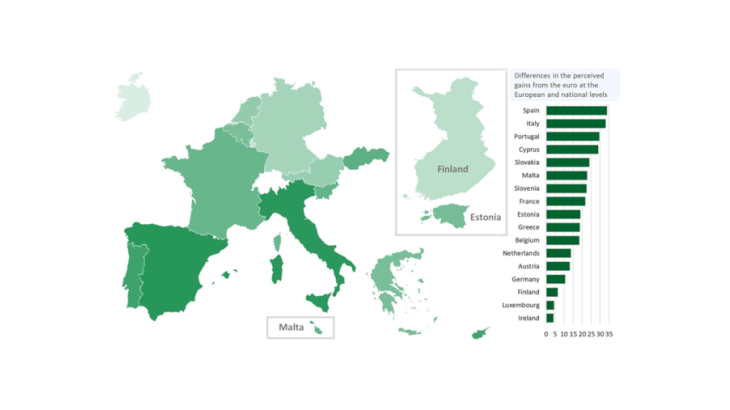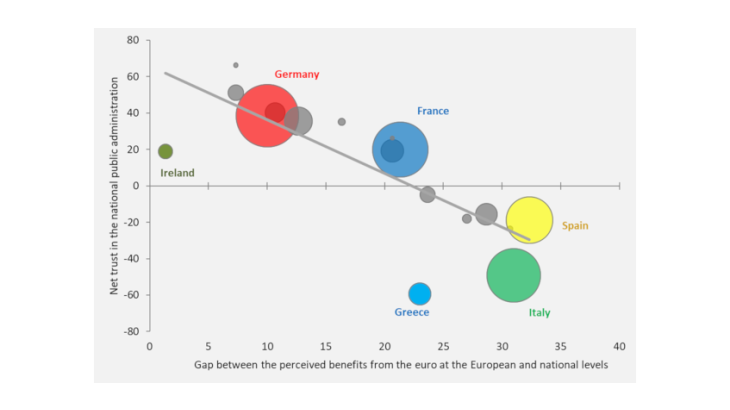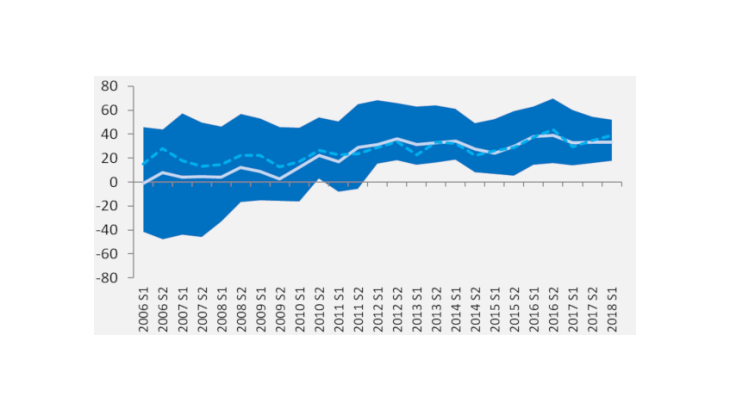In November 2018, according to the Eurobarometer survey, 75% of euro area citizens supported an “Economic and Monetary Union with one single currency, the euro”. This constitutes the highest level of support for the single currency since its creation. The level of approval is particularly high among the most recent members (Baltic States and Slovakia) and France displays a level close to the European average, at 72%.
The “grass is always greener” feeling
For all that, opinion surveys show a strange paradox: in each euro area country, the number of individuals surveyed who consider that the euro has been beneficial for the EU as a whole is greater than those who believe that it has been beneficial for their own country. This “grass is always greener” feeling could be explained by a perception that there is a potential at the European level that is not being fully exploited at the national level.
Within the euro area, this paradox is highlighted by the Flash Eurobarometer published yearly by the European Commission and containing two indicators of support for the single currency. It measures citizens’ perception of the euro’s benefits for both the European Union as a whole (“EU indicator”) and for the individual countries surveyed (“country indicator”).
When the “EU indicator” is higher than the “country indicator”, a larger share of those surveyed perceives benefits of the euro for the EU as a whole. In other words, it considers the “grass to be greener”.
This feeling is less pronounced when trust in national institutions is high
In the latest survey in 2018, this paradox once again existed in all Member States. However, as Chart 1 shows, the degree of this sentiment varies across countries. Simply put, it is less widespread in Northern euro area countries than Southern ones. Nevertheless, Greece is an exception with levels close to those of countries with intermediate levels such as France or Belgium.
The Eurobarometer survey identifies the potential role of national institutions as a possible factor for explaining the amplitude of the difference in the perception of gains from the euro at the European and national levels by the citizens of a given country. Chart 2 shows that the “grass is always greener” feeling is inversely proportional to the net trust in the national public administration.
This relationship could be explained by the fact that the quality of national institutions tends to change the long-term performances of European countries, particularly in terms of real activity (Masuch, Moshammer and Pierluigi, 2016). For instance, in some euro area countries (Chart 2), institutional difficulties prevent citizens from fully enjoying the benefits of the euro. An improvement in the functioning of national institutions could thus contribute to strengthening the benefits of the adoption of the single currency.


